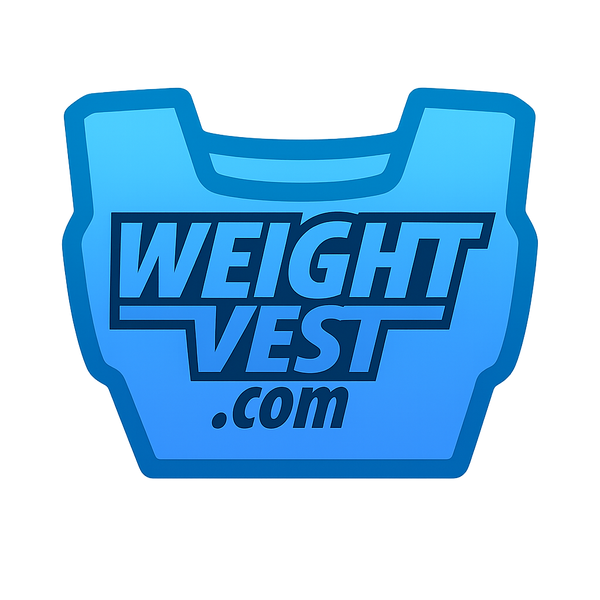What Women Over 40 Need to Know About Bone Health, Menopause, and Safety
Millions of women in perimenopause and menopause are searching for ways to fight bone loss, osteoporosis, and hip fractures. As estrogen levels decline, bones weaken — and one of the most popular new tools showing up everywhere from TikTok to doctor’s offices is the weighted vest.
But before you strap one on, it’s worth asking: Is a weight vest right for you?
Or are there certain conditions where you should avoid wearing one altogether?
🦴 The Truth About Weighted Vests and Bone Density
Weighted vests work by adding gentle, distributed resistance to your body — which increases mechanical load on your bones and muscles. That extra stress encourages your body to adapt, much like resistance training does, and can help maintain bone strength, posture, and balance as you age.
According to orthopedic surgeon and menopause expert Dr. Vonda Wright (Pictured) weight vests can complement other forms of training and be “a safe, effective way to build balance and bone density when used properly.”
However, she cautions that vests aren’t a substitute for traditional resistance training (like squats, presses, or deadlifts), which remains the most proven way to stimulate bone growth.
🚫 Who Should Not Wear a Weight Vest
While most healthy adults can safely use a vest, there are times when extra weight can do more harm than good. If any of these apply to you, check with your healthcare provider before using one:
1. Joint or Back Problems
If you suffer from chronic back pain, arthritis, or spinal disc issues, adding weight can increase compression and discomfort.
2. Balance or Mobility Issues
If your stability is compromised (due to vertigo, neuropathy, or age-related balance loss), a weighted vest may raise your fall risk.
3. Recent Injury or Surgery
Avoid vests if you’re recovering from fractures, joint replacements, or orthopedic surgery until cleared by your doctor.
4. Severe Osteoporosis
In cases of advanced bone loss, even light loading can increase fracture risk. Start with bodyweight exercises first and progress only under professional supervision.
5. Poor Posture or Gait
If you tend to slouch or lean forward when walking, wearing extra weight can reinforce bad mechanics and lead to strain.
✅ How to Use a Weighted Vest Safely
If you’ve been cleared to use one, follow these safety guidelines to get the best results:
-
Start light — use only 3–5% of your body weight at first.
-
Build up gradually — add small increments each week as your strength improves.
-
Keep posture tall — shoulders back, core engaged, head aligned.
-
Use it for walking, stair climbing, or light resistance sessions.
-
Avoid high-impact jumps or running until your body has adapted to the load.
💪 The Bottom Line
Weighted vests can be a powerful ally for women over 40 who want to stay strong, balanced, and resilient. But they aren’t a replacement for strength training, good nutrition, and hormonal health — they’re a smart addition.
As Dr. Wright says:
“You can’t medicate your way to strong bones — you have to move your way there.”
When used correctly, a quality weight vest can help you do exactly that — move better, stand taller, and age with power.
🇺🇸 The Best Weighted Vests for Women
At WeightVest.com, we’ve been helping athletes, professionals, and active adults train smarter for over 25 years. Our USA-made* vests are engineered for comfort, safety, and performance — from compact daily-wear models to high-capacity training vests.
Explore our most popular models for women:
-
V-Force® Weight Vest – Compact, form-fitting, and ideal for walking or everyday strength sessions. Up to 150 LBS.
-
V-MAX™ Weight Vest – Adjustable up to 50 lbs, with narrow and wide shoulder options for better mobility.
-
BOX® Weight Vest – Simple, durable, and balanced for all-around training versatility. Made for team use. Features a Cam-Buckle Belt.
Each vest is Made in the USA*, built to last for decades, and backed by a Lifetime Warranty against defects.
🩷 Start Smart, Stay Strong, Age Powerfully
Whether you’re walking the neighborhood, training in the gym, or working on posture and balance, your vest should move with you, not against you. Start light, train consistently, and trust your body to adapt. Always consult your doctor before starting a weight vest protocol.
Your strength story doesn’t end at menopause — it begins there.
*made in USA with domestic and global components.

